Tomato Ivan da Marya: all about growing varieties
Dark color tomato arouses the interest of gardeners and encourages them to buy seeds. Some gardeners prefer just such tomatoes, claiming that they are more useful. Today there is a rich assortment of black tomato varieties, one of which is Ivan da Marya.
Content:
- Distinctive features of the variety
- The process of growing seedlings
- Rules for transplanting seedlings into the ground
- Competent tomato care
- Protection against diseases and pests
Distinctive features of the variety
The Ivan da Marya variety is a new hybrid from the Myazina collection. It gets its name from its contrasting coloration. Unripe fruits are two-colored: the lower part is green, and the reverse side is decorated with a pronounced purple spot. The cooler the nights, the larger the stain becomes. When ripe, the stain is almost invisible, only a brown coating remains on the skin.
The fleshy flesh of the fruit has a pearlescent brown color, a pronounced herbal aroma and a sweet taste.
The average weight of tomatoes reaches 210 grams. Tomatoes are collected in heavy clusters. The shoots are also purple in color. The bushes are vigorous and can reach two meters in height. Shoots are weakly leafy and do not need pruning. But pinch bushes are necessary - this increases the quantity and quality of the crop. Grasshopping is carried out in one or two stems, the top is cut off, leaving a couple of leaves above the brush.
Ivan da Marya is a very early hybrid. Fruit ripening occurs 90-110 days after planting seedlings. Ripe tomatoes are brownish-red in color. They are suitable for all types of processing and preservation, as well as for fresh consumption. The yield of tomatoes is high. Up to five kilograms of vegetables can be harvested from one bush, and three bushes are planted per square meter.
Tomato growing process
You can grow tomatoes Ivan da Marya through sowing seeds in open ground or through seedlings. Gardeners prefer the second method. In this case, you can get an earlier harvest, as well as save most of the planting material. In the case of sowing seeds, there is a risk of damage to them by recurrent frosts or destruction by rodents.
Growing seedlings - the process is simple, but it requires compliance with some rules and is carried out in stages:
- seed preparation
- selection of soil
- selection of planting containers
- sowing seeds
- ensuring proper care
To get strong and healthy seedlings, you should take care of proper seed preparation. The selection of quality raw materials includes the removal of damaged, broken and empty seeds. If the first and second can be determined visually, then for the selection of the latter, the seeds should be placed in a container with warm water. Unsuitable for planting specimens will float to the surface.
Disinfection planting material can be carried out in several ways:
- soak for half an hour in a manganese solution
- place for 15 minutes in a solution of hydrogen peroxide
- soak for 12 hours in a solution of growth stimulants
After any procedure, the seed should be well rinsed in running water and dried. Soaking seeds to speed up germination. To do this, they are placed in clean water for a day.After the allotted time, the seed can be planted in prepared soil or germinated. For germination the seeds are placed in a damp cloth and left in a warm place for several days, until the roots appear.
If the gardener is confident in the quality and freshness of the seed, then it is permissible to sow them without soaking and germinating.
For growing seedlings, special soil mixtures or self-prepared soil are suitable. The soil mixture is prepared from equal parts of sod land, humus and peat. The last component can be replaced with coarse sand.
Sowing seeds for seedlings can be carried out in any available container, up to 20 cm high.It can be seedling boxes, trays, cassettes, individual pots or peat tablets.
Boxes, trays and cassettes are more convenient and economical, but when young bushes grow up a little, they need to be planted in separate containers in order to prevent stems pulling and root entanglement. Individual pots and tablets simplify the process and minimize the invasiveness of plants at the time of transplanting into open ground. Any containers should be equipped with a drain hole.
The quality of seedlings depends on the correct sowing of seeds. Therefore, it should be carried out according to a certain scheme:
- The containers are filled with soil mixture and watered so that it shrinks. Shallow furrows (up to 1.5 cm) are formed in the soil with an interval of 5 cm (if sowing is carried out in seedling boxes or trays).
- The prepared seed material is placed in the grooves at a distance of two centimeters from each other and sprinkled with soil.
- The containers are covered with transparent polyethylene and placed in a warm place until the first shoots appear.
- After the appearance of green shoots, the seedlings are placed in a well-lit place. Daylight hours should be at least 15 hours, so if necessary, you should take care of artificial lighting.
- Watering the seedlings should be done carefully, especially before the first leaf appears. At this stage, you should use a spray bottle and slightly moisten the soil. When the leaves appear, watering can be carried out at the root. Irrigation water should be warmed up to 18 degrees. It should be soft. Melt is ideal.
In addition to proper sowing, seedlings need to be well looked after, because the quality of the future harvest depends on this. It is not difficult to care for tomato seedlings, but special attention should be paid to the temperature regime. The daytime temperature should be 15 degrees. Gradually, it is raised to 25 degrees and held until the plants begin to harden. The night temperature should be five degrees lower.
When the seedlings reach a height of 30 cm and 3-4 pairs of developed leaves are formed on it, then this is a signal to transplant tomatoes into the ground. A healthy and developed seedling has a thick, strong stem, short internodes and 1-2 flowering clusters.
Rules for transplanting seedlings into the ground
Planting tomato seedlings Ivan da Marya should be carried out from mid-May to mid-June, depending on the climatic conditions of the region. The main thing is that at night the temperature does not drop below 15 degrees.
On a note! Nature itself will tell you the correct planting time: if they bloom lilac, chestnuts and acacia, you can safely plant tomatoes in open ground.
Experienced gardeners recommend treating the prepared area with biostimulants, which will help disinfect the soil and minimize plant stress. If the bushes at the time of transplantation are higher than 25 cm, then care should be taken to install a support so that the leaves and stems do not lie on the ground.
When planting, you need to dig in part of the main shoot and carry out several hilling before the start of fruiting. These activities stimulate the development and strengthening root system.
Tomato seedlings Ivan da Marya are planted according to a certain scheme, which will subsequently facilitate the care of the plants:
- the spacing between rows must be at least 60 cm
- distance between bushes - at least 40 cm
- no more than three bushes are placed on one square meter
This scheme allows you to provide plants with uniform lighting and air exchange. For each bush, a separate hole is prepared, which is fertilized with humus and superphosphate, well moistened and seedlings are planted.
Farmers recommend placing the beds from east to west. This helps to increase the duration of natural light between the rows.
Competent tomato care
When the seedlings take root and start growing, they will need standard care, which consists of regular watering, fertilizing and forming bushes:
- Watering... Water the tomatoes at the root, preventing moisture from the soil around the plants. To make the process easier, you can dig plastic bottles with a cropped bottom near the shoots and use them like funnels. This trick allows you to nourish plant roots without spilling water. Daily watering is carried out if the weather is dry. The procedure should be carried out in the evening when the sun is not so active. During the formation of fruits, watering is stopped so as not to provoke cracking.
- Top dressing. Tomatoes are fed twice a month using solutions of mineral phosphorus-potassium mixtures. The unique color of Ivan da Marya tomatoes depends on the amount of anthocyanins in the soil. With a lack of it, tomatoes acquire a dirty pink color. To maintain the necessary acid-base balance in the soil, cut mustard or pea bushes can be decomposed between rows. And also feed with chicken droppings. In the absence of rain, it is diluted with water and applied at the root. This top dressing is recommended to alternate with chalk or ash. Litter should be added the first week and calcium the next.
- Formation of bushes. When the tomato bushes begin to actively develop and grow, the extra side shoots should be removed, leaving one or two main stems, the tops of which should be pinched. During the procedure, you do not need to leave stumps on the stems - they increase the risk of re-development of lateral stems. Correct and timely formation will reduce the risk of diseases and increase the amount of the crop.
Protection against diseases and pests
Most often, planting tomatoes are affected by viral fungal diseases:
- late blight
- macrosporiosis
- leaf spot
- brown rot
- septoria
It is quite difficult to deal with them, so it makes sense to carry out prevention, which consists in loosening the soil, removing darkened leaves, thinning the plantings, and moderate watering. Seedlings are recommended to be processed before planting bordeaux liquid, and add to the soil ash.
If an infection has occurred, then you need to remove all damaged plants, and treat the rest of the bushes with insecticidal or fungicidal solutions.
Also, tomatoes can suffer from insect attacks:
The prevention of their spread is the minimization of nitrogen fertilization, maintaining the cleanliness of the plantings. When pests appear, insecticide treatment should be carried out immediately, large beetles should be removed manually.
Compliance with the rules for sowing seeds, growing seedlings, as well as providing competent care will allow you to get a high-quality and rich harvest of tomatoes Ivan da Marya. Vegetables will not only decorate and diversify the table, but will help prepare pickles for the winter.
More information can be found in the video:






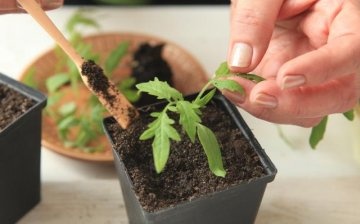

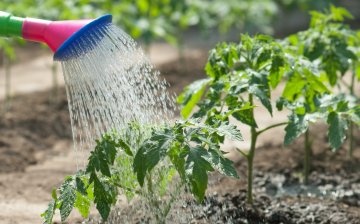
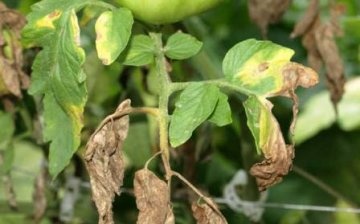








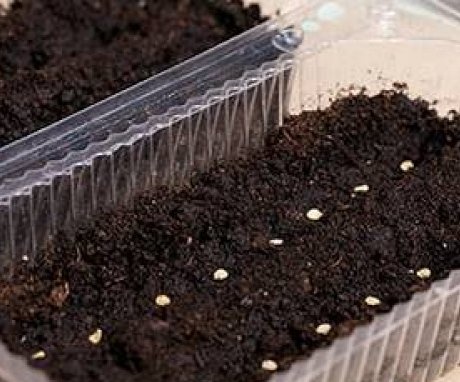
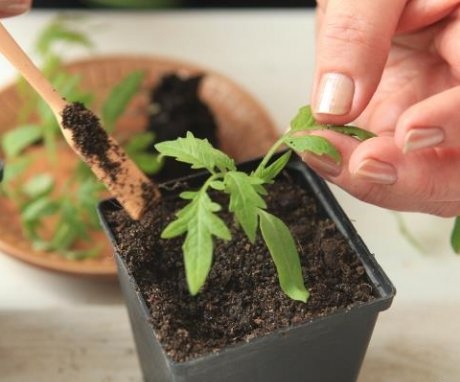
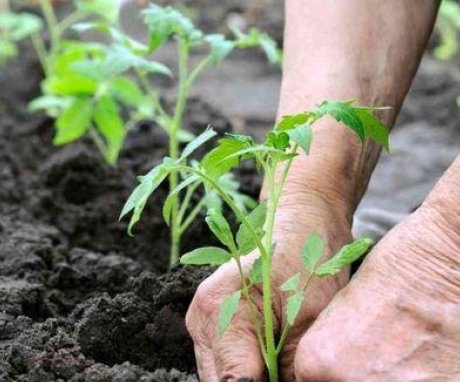

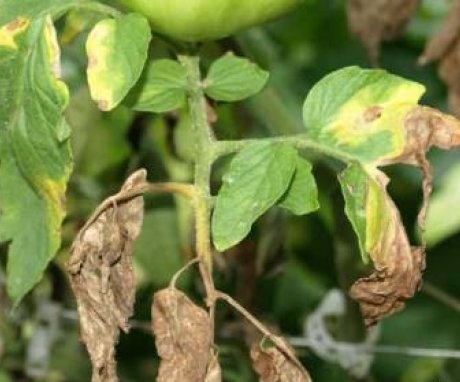
Any variety of tomatoes must be watered twice a week, otherwise their roots will be weak. In addition, you need to pinch the bushes not once, but every week. In my opinion, red tomatoes are more useful.
In our market I saw that they sell yellow tomatoes, but I have not seen such spotted ones.I do not argue that they are delicious, but I am used to red tomatoes. And care and prevention of diseases, it seems to me, are the same for all varieties of tomatoes.